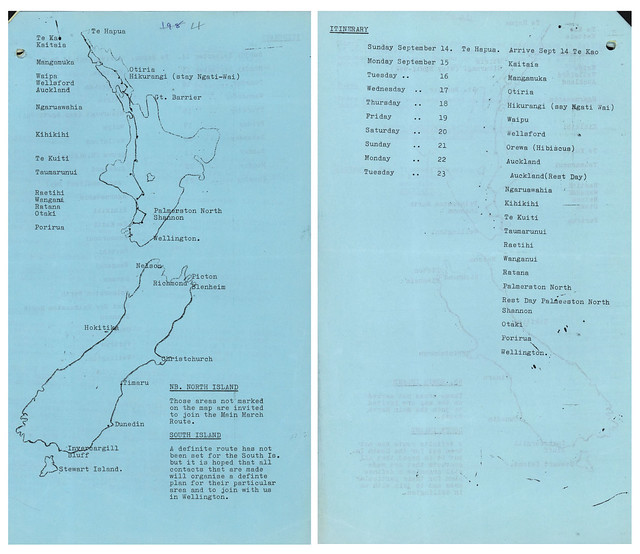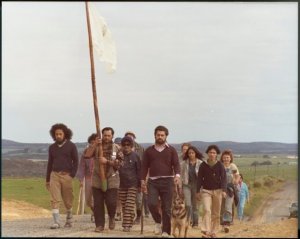Forty years ago a landmark event in New Zealand history began in a small Northland community called Te Hapua, the most northerly settlement in Aotearoa.
This was the beginning point of a protest march that, over the course of a month, would take in the length of the North Island. The greater distance however was yet to be travelled - that towards a bicultural New Zealand.
This was an important moment in New Zealand history. Since the signing of the The Treaty of Waitangi in 1840, Māori had been increasingly alienated from their land. Legislation often disadvantaged Māori in the way it applied to land that was collectively (or tribally) owned.
Time after time, Māori land was transferred to Crown ownership via one piece of legislation or the other. Māori land ownership had dwindled from 67,000,000 acres to just 2,000,000 acres. The petition that accompanied the march, or hīkoi, identified the Town and Country Planning Act, the Public Works Act, the Rating Act, and the Counties Amendment Act as contributing to this problem.
Organised by Te Rōpū o Te Matakite, a pan-tribal group, and led by Dame Whina Cooper the march culminated in a 5000-strong crowd arriving at Parliament with a petition signed by 60,000 people and presented to Prime Minister Bill Rowling. The petition called for "the abolition of monocultural laws pertaining to Maori land" and pressed those in power "to establish communal ownership of land within the tribe as a legitimate title equal in status to the individual title".
In a booklet issued by Te Rōpu o Te Matakite, they go into more detail as to why the march is needed emphasising the importance to Maori of the land -
Land is the very soul of a tribal people.
IF THERE IS NO LAND, WE HAVE NO TURANGAWAEWAE, NO SOUL, NO MANA, NO IDENTITY. WE BECOME A NON-PEOPLE IN OUR OWN COUNTRY.

Though it took place in the North Island, as this map of the march route shows, the intention was that Māori from all over the country would be involved, making it a national movement. It was expected that South Island protesters would meet with their northern counterparts in Wellington.
For those wanting to know more about this watershed moment in New Zealand's bicultural journey, National Library in Wellington has an exhibition of photographs taken by Christian Heinegg during the Māori Land March called 'Not one more acre'. Some images from Heinegg's photo essay are available online.
Archives New Zealand has digitised a selection of documents and images that tell the story of the march. View them in their 1975 Māori Land March set on Flickr.
You can also watch, via NZ On Screen the full length television documentary Te Matakite O Aotearoa - The Māori Land March, made during the protest.
Further reading
- Thousand-eyed eel: A Sequence of Poems From the Maori Land March 1975
- Hīkoi: Forty years of Māori protest
- Ka whawhai tonu matou: Struggle without end
- The Penguin eyewitness history of New Zealand - "Maori land march, 1975" chapter
- Māori Land Protests: Hikoi and Bastion Point (DVD)
- Search our catalogue for titles about Dame Whina Cooper





Add a comment to: Land is the very soul of a tribal people